Kit Couture: A Look at Football’s Rebrand by the Fashion Industry
Two of my favourite topics combined.
A few months ago, during my hiatus, I saw a post by
about the feminisation of male dominated sports through fashion, and I told myself I would write an article about it. I mean, why wouldn’t I? It would allow me to ramble about two of my most beloved topics. It took a lot longer than I originally intended it to, but I’ve finally gotten around to it.Before I get into the meat of it, I do want to explain a bit of my own personal style and interests: If you’ve come from my Twitter account, then you would know that most of the time I refer to my liking of “sports” in this article, I am mostly referring to my beloved football (or soccer for the North Americans here). After trying for years to fall in with the affinity for it that tons of people have back home, it finally clicked for me few years ago. Don’t get me wrong, though, I do have ball knowledge, but I think the reason it took me so long to finally have my own interest in football is mostly because I grew up in the least sports-interested household in Jamaica. For the most part my family only really cares about football when it’s World Cup season, and aside from that, their opinions range from not knowing different leagues to only checking Premier League standings every couple of weeks for the sake of it. I, however, have become resident Ball Connoisseur in recent years, and am happy to fill them in on all knowledge they might lack. My own affinity for football has bled into my daily style preferences in a manner that is not unlike a lot of women who have also acquired a taste for sports.
(In case anyone doesn’t know BTW, I support Real Madrid and Arsenal, and on occasion I have an interest in Juventus.)
Now that that’s out of the way, let’s dive into the actual subject matter.
The 2022 World Cup
While I believe the fashion trends inspired by more unisexual sports like tennis occurred mostly in late 2020 throughout 2021, when “old money” and “kennedyism” were all the rage, the boom in the male-dominated sports-to-fashion pipeline really kicked off in November 2022 with the Qatar World Cup.
Football is the #1 sport across the world, and when the World Cup comes on even the most casual viewer is awake and alert for the month-long tournament (like my family, for example). What really differentiated the Qatar World Cup from previous ones, however, was the widespread nature of TikTok. While it technically existed when the 2018 Russia World Cup was ongoing, it was in a totally different format, and in the minds of most people was still a fad-app from a few years prior that people only posted dance videos on. Four years later, the now-TikTok expanded past that and was a staple platform for everything from entertainment to DIY material to clothing inspiration. Furthermore, the influx of new users, and their influence on TikTok’s unique algorithm, made it a new home for a lot of content and styles of posts that had not been seen since Instagram’s prime of life — specifically, edits.

The impact that the video-editing community has on the public is very understated and overlooked, but the right edit can make you gain interest in content you would never have been otherwise drawn to. Footy fans love to lash “World Cup fans” and women who are only into the sport for their attraction towards the players, however, this newfound interest in the sport by this demographic is the best example of those trickle down economics that Reagan was talking about.
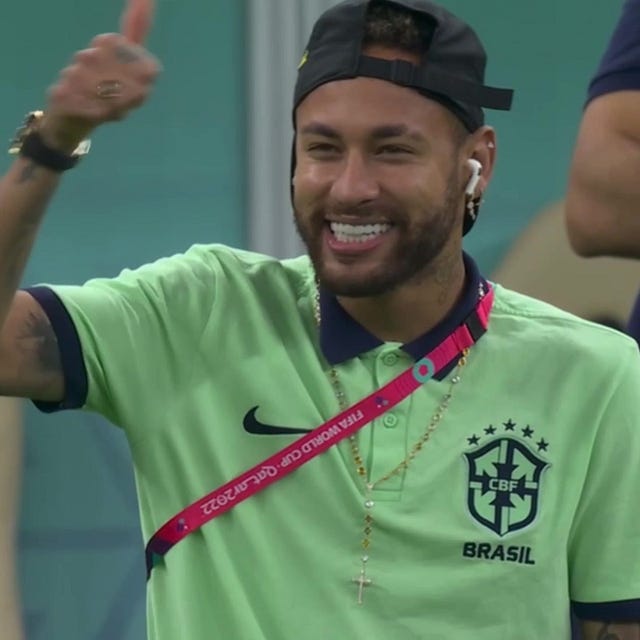
 Tiktok failed to load.
Tiktok failed to load.Enable 3rd party cookies or use another browser
Furthermore, this fascination with players brought about a fascination with their romantic partners at the same time. Tolami Benson, partner of Arsenal’s Bukayo Saka, is notably the WAG, and perhaps saw the biggest rise in popularity during this period. Almost three years later, the attention given to her has increased still, to the point of her being the subject of a Vogue article.
Traditionally, the term “WAG”—an acronym for Wives and Girlfriends (of athletes)— hasn’t always been such a sought after title, and was used in demeaning and frankly, misogynistic ways by media outlets. But in more recent years, it’s been reclaimed and used in a more positive manner towards women who are seen by lots of people as “aspirational.” In addition, a lot of these individuals have garnered their own fan pages, something that wouldn’t be particularly abnormal for more established women in their own rights, like Victoria Beckham or Cheryl Cole, both of whom were popular singers. For others who are known simply for being associated with a player or players, this shows how far the term and “position” have come in modern culture, and creates a separate aspect that is based less on player-specific attraction.
The 2023 Women’s World Cup
This is where Footy bros’ grievances with “women who are only here cause they’re attracted to the male players” falls a bit apart because there are no men in the Women’s World Cup, unless you’re going to thirst after the coaches, which I doubt most are. The 2023 Women’s World Cup showed that women do, in fact, enjoy football and are willing to watch games, not because of hot men, but because they are genuinely drawn to it.
The matter of inclusivity and representation also plays a part in this — women in football, a traditionally male sport, have never really been given the same attention as their male counterparts. As seen by pay disparities and much lower turnouts for the women’s teams when compared to the men’s teams of the same clubs, there hasn’t been the same grace given to female footballers despite them sometimes being better. In recent years, however, this has been gradually changing.
During the 2023 World Cup, there was a 710% spike in sales for the England Lionesses’ kits and merchandise after their semi-final match against Austria. Also during the tournament was a 4000% increase in Google searches for the phrase “Lionesses kit.” Such levels of recognition and attention encourage the involvement of more women in sports fields, and said involvement and interest bleeds over into their personal styles and wardrobe.
Blokette, Blokecore, and the 30-year Trend Cycle
The term “Blokette” was coined by the hosts of the podcast
in late 2022 as a portmanteau of “bloke” and “coquette.” Coquette aesthetics are far more widespread and recognisable with their lace, bows, and pastels, but Blokecore —coined on TikTok by Brandon Huntley— is more UK-based and therefore harder to place in some minds.Merriam Webster defines “bloke” as an informal British term used to refer to a man or a fellow. Due to football’s English roots and the popularity of the Premier League, commentary from British folks on the sport is a given. Huntley himself originally only used the term “Blokecore” as a joke after noting how often commentators and YouTubers make use of it in their content. From there, the trend and the term spread across TikTok. Blokecore’s major focus is to show dedication for and allegiance to football clubs (a staple of British culture) and is very basic in nature, with football kits and sneakers being the essential elements. There has been criticism of the aesthetic for its “gentrification” of British working class culture, especially since it has been co-opted by North Americans who have a completely different relationship with Association Football than the British do.
Combining these ideas of Coquette and Blokecore, it stands obvious what Blokette is: a combination of the masculine aspects of blokecore through football aesthetics, and the feminine aspects of coquette such as the bows and knee-high socks. Staples to the Blokette look include: football kits (from jerseys to anthem jackets to training shorts), Adidas Sambas, ballet flats, leg warmers, pleated skirts, tall socks, and ribbons. The fact that it is a combination of elements that are commonly associated with both sides of the gender spectrum makes it an easy middle ground for the inclusion of androgynous figures. Its hyperfemininity in an inherently masculine space also breeds further interest by women in an area that is dominated by heterosexual men.
Blokecore is most commonly compared to “Casuals,” a subculture from the 70s and 80s that is also related to football and its popularity amongst the British working class. Whilst Blokecore is blatant with its allegiance to specific sports institutions, Dressers (people who partook in Casuals) were more focused on dressing “smartly” and in more expensive clothing for their match attire. They would rather be caught dead than be caught in a football kit that expressly showed their allegiance because it would aid law enforcement in identification for their Hooliganistic acts. Football rivalry and violence linked to the sport became much more layered in the decades this aesthetic dominated as fans’ attire would 1) make them stand out “on top” when compared to rival clubs, and 2) made it easier to differentiate them from more traditional-looking fans who were known to be aggressive. The Casuals aesthetic was born out of a shift towards brands like Burberry and Lacoste and away from the football aesthetics, while Blokecore was born out of a re-shift to those aesthetics, while still maintaining Casualist aspects (like the staple item of Adidas Sambas).
As for the traditional 30-year cycle of trends, it stands that the pre-70s edition of Blokecore, which died out in favour of 70s Casualism, would be rebranded just in time for the 2000s, which it was. The generation of English footballers that existed in the late 90s and early 2000s had no shortage of fashionistas, including the #1 It Boy, and a personal favourite of mine across several categories, David Beckham.
The Posh and Becks duo is iconic in and of itself, but as admitted by Victoria herself, she was only in the football-sphere because of David. For him, on the other hand, it was his bread and butter, and the more sports-casual looks were his domain. His involvement in fashion and branding lit a pathway for more football-centric looks to be on the up and up again, hence the 2000s increase in club-specific attire.
So that accounts for the 70s to 2000s 30 years, but we’re only around 20 years out from the 2000s, so what threw off the cycle? As I mentioned earlier, TikTok’s influence is extremely widespread. Such a rapid spread of information, combined with the fast fashion industry, cuts the trend cycle’s traditional time span, sometimes by a large chunk, such as a whole decade out. One after the other new trends are quickly put out and then burnt out, to the point where few things are truly full-on trends by themselves and can be moreso likened to micro-trends. Blokecore and Blokette are two aesthetics that are far away from this end of the spectrum, though, primarily because outside of North America, football allegiance is never really a trend to the rest of the world.
Sports and Fashion in Latin America and the Caribbean
For most of this article I have been speaking in reference to how football in fashion is a trend in North America, but as I just said, football allegiance is by no means something that is fleeting to people outside of the States and True North. Most of the controversy around Blokecore and its “gentrification” are found in the fact that a lot of the American patrons of this trend don’t really understand just how important football is globally. The comparison could be made between popular American sports such as American Football and Basketball, but somehow I don’t quite think it is the same thing, partly because in America there are so many sports and seasons to split attention amongst. Whereas in England, or other countries, football is on almost year-round and is really something that is so ingrained in culture that there is a significant gap between its popularity and other sports.
In South American countries like Brazil, Argentina, and Colombia, football is a very important part of culture and lifestyle, and national teams, as well as domestic leagues, are given very heavy attention by the general populace. In my own country, Jamaica, the national team and domestic leagues are given much less attention, but to call European leagues, especially the Premier League, “popular,” would be an enormous understatement. Saying this to say that owning and wearing sports memorabilia and merchandise is nothing out of the ordinary. In fact, I remember that when blokecore started becoming a trend amongst Americans, I had a conversation with classmates at school about how wearing customised sports jerseys or repros, for example, is just a normal Tuesday where we are from. However, while the arrangement of pieces are the same, also referring to it as “blokecore” would not really be completely accurate. That is because nobody calls it that down there — it is in fact just average Tuesday attire.
Although just showcasing your allegiances is a large factor in why football memorabilia is popular when you’re in the Tropics, the clothing also serves a second purpose: it is designed to keep you cool. Proximity to the Equator makes the majority of Latin America have tropical climates. Just last week my Nana mentioned that she doesn’t check the weather app because Jamaica only has two major conditions: hot or rainy. She had said it offhandedly as a comparison to how frequently we check the weather here in Canada, but it is true that weather apps are not particularly popular back home because there aren’t likely to be any major changes in how outside presents; ninety percent of the time it is hot and humid.
For footballers, running up and down a pitch makes for a ton of sweat produced — even in countries like England that are more temperate and don’t get particularly warm during the season — and its unreasonable to think that players should have to be weighed down by that. Football kits are made of wicking fabric, which contains hydrophobic fibers at a high density (despite how thin they might appear to be) allowing for sweat to be pulled away from the body and into the fabric so it can evaporate quickly. Going back to the hot and humid average weather conditions for most places in the Caribbean and Latin America, the clothing with design details such as these are what you would find ideal.
Insert-specific-country-here-core is also linked to the afterbirth of Blokecore, with Brasilcore being the most popular and widespread example, also having gained a footing amongst Americans for their daily style. A positive aspect of Brasilcore becoming popular outside of Brazil is that it aids in depoliticising the country’s colours which, for a few years, were linked to fascist political parties instead of their original intended purpose as being a national symbol. A more negative consequence however, is the co-opting of aesthetics of Latin American and Caribbean countries simply for the “exoticness” of it. These have become the basis of trends for a lot of people with no knowledge or real background of the culture.
Fashion doesn’t necessarily have to be that deep, and of course some people do just like the colour schemes and combinations, but I do feel this is an important detail to mention. Especially because fetishisation of countries in this region of the world and their citizens have simultaneously seen a rise with these trends in clothing.
High Fashion and the Runway
Sports-inspired collections and collaborations are nothing new, but in keeping with the trend cycle, the reemergence of these partnerships and at a more frequent rate is an indicator for the climate that we exist in.
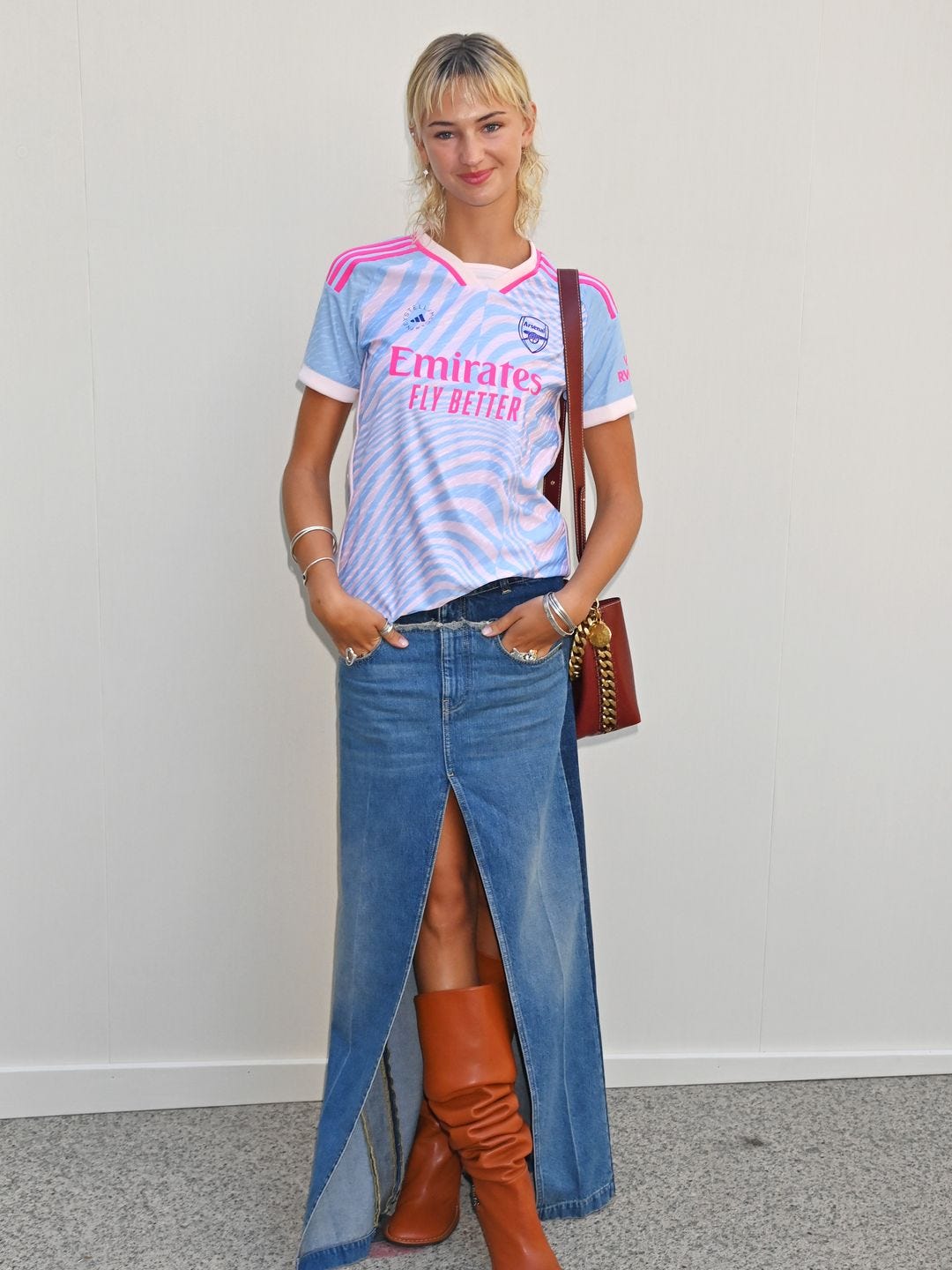
The massive influence of sports is the perfect alleyway for fashion houses and designers to walk down if they are looking to expand their brand’s reach. Benefit is found for both the brand, who are able to connect with a wider audience, and the sports team, who get unique interpretations and subversions on their team image and merchandise. It is also a merging of two of the most profitable industries worldwide to create, of course, even more profit. What is even better is when the pairing is between two entities that already have audience overlap, making it less work to meet in the middle of both streets. For example, a few years ago French brand Dior and Ligue 1 club Paris Saint-Germain had their own merger moment:
Other collaborations include Inter Miami x BAPE, Inter Milan x Moncler, Miu Miu x New Balance, Y-3 x Real Madrid, and while not necessarily a collaboration, brands like House of Errors do their own spins on classic sports merchandise (see their knitted football jerseys)
Athletes themselves are also getting more attention in the fashion-sphere and having their own moments, whether off the field/pitch/whatever, or on it.

Conclusion
To wrap this all up, while the 2022 Men’s World Cup generated a curiosity about football amongst female audiences — a demographic that wouldn’t traditionally be as involved in the sport — the 2023 Women’s World Cup really helped to cement that into a proper interest. This interest, paired with the rapid reintroduction and rebranding of trends, which is facilitated by TikTok, birthed new aesthetics that showcase masculinity and femininity simultaneously, such as blokette. However, while some of the elements from these fashion cycles present as “new” and “fresh” to a North American audience, they are almost ubiquitous (or at the very least not out of the norm) in daily wear for people who exist in Europe, but also in LATAM & the West Indies. For the latter, the prevalence of such pieces can be based in both climate-related reasons and as typical fan-behaviour that showcases team loyalty. In addition, aside from the day-to-day looks that include basic merchandise and repros, football clubs and their players have been branching into the high fashion industry through ambassadorships and collaborations. This, of course, aids in the facilitation of football as a space that fashion and style can also truly exist in. Once again, the break-neck speed at which trends are cycled through nowadays limits how they fester and develop, however, as we stand three years beyond ground zero, it appears as if football in fashion is one of those things that has subverted this expectation, and found a proper footing for itself.






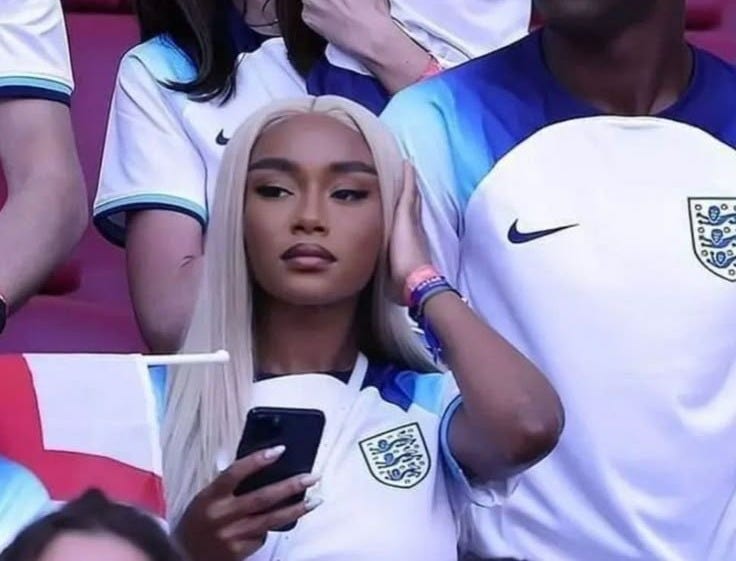
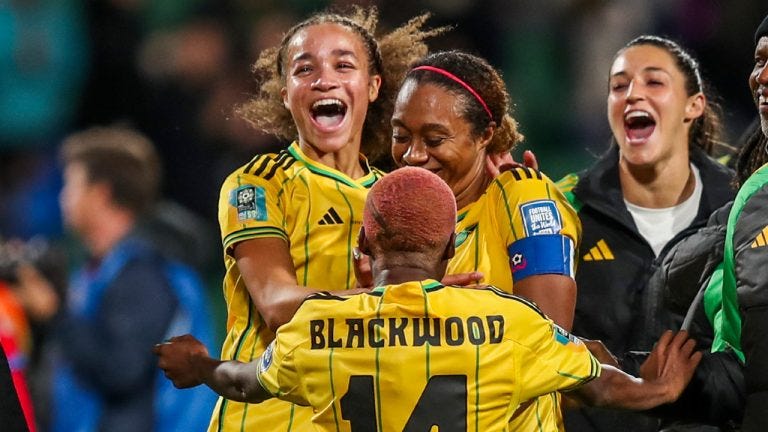
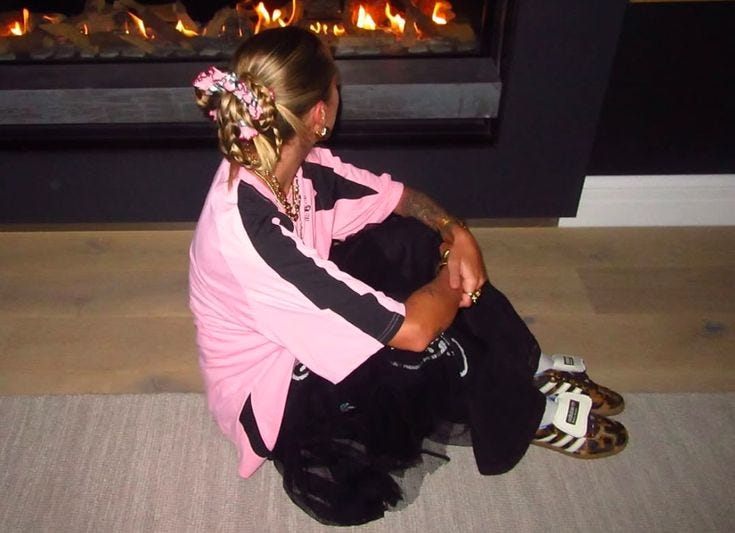
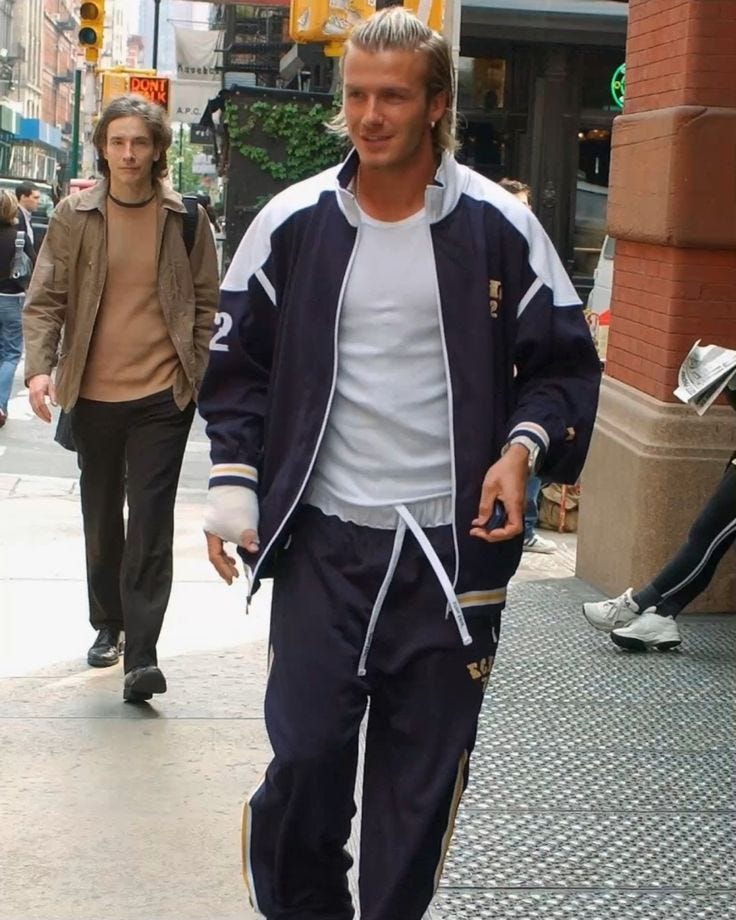


I loved this! even though I’m not really immersed in the sport that much I have noticed a lot when it comes to how everything gets “-cored” so easily but it’s definitely more prevalent with football
What a fab and in depth piece of writing!! I’ve so many notes on football x fashion in hopes of writing about it one day but like everything else it ends up in the drafts/unfinished ahahaha. this writing goes above and beyond! Obsessed xx